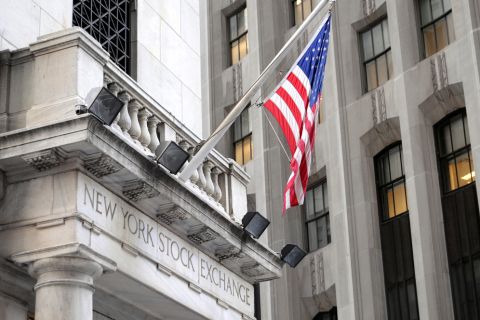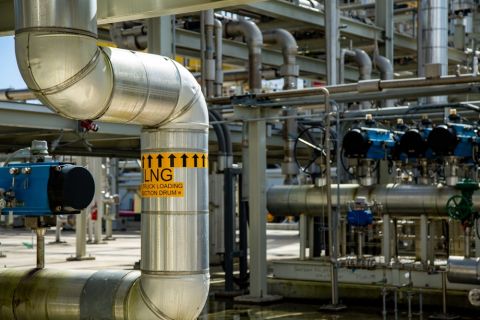The type of institutional investment affects volume in E&P stocks. Historically, lower trading volume coincides with lower investment from so-called high-turnover institutions, while retail ownership in these stocks stays relatively constant. Retail and institutional investors contribute to total trading volume on different scales. Institutions obviously have greater buying power than individuals, and they usually represent a single decision-maker buying a bulk of shares, whereas retail investing involves hundreds of uncoordinated entities buying a small number of shares. Fidelity Management & Research offers a good representation of the world of retail investors. This mutual fund family offers myriad choices that focus on every market capitalization and investment style. The funds constantly rotate, maintaining relatively stable positions over the long run. Retail investment follows the same pattern: there are always new investors willing to replace sellers. Changes in retail ownership could also imply retail brokers are plugging a stock or the sector, and drumming up interest. This may happen in times of high natural gas prices, a lagging stock market, or high-profile news or opportunity, such as M&A activity. In first-quarter 2002, the stocks of six companies (Anadarko, Apache, Burlington, Devon, Kerr-McGee and Unocal) rose an average 13.7%, driven by a 27.7% rebound in gas prices (complemented by a 27% rise in the 12-month strip). The market-weighted S&P E&P composite rose 8.3%. However, macroeconomic sector and economic trends weakened medium-term interest in the sector. First, the American Gas Association reported in its weekly storage report on March 27, 2002, that storage was at 45% of capacity, versus 21% at the same time in 2001. The ramp-up in production anticipated more industrial demand for power and new gas-fired power plants. Second, as the economic recovery slowed and power demand diminished, investors began to shy away from medium-term sector prospects. They questioned what would support commodity prices and who would use the oversupply of gas. In the first quarter, average daily volume dropped in six large-cap E&P companies 14.3%. In the same quarter, total institutional investment in the six companies rose to $45 billion by March 2002, versus $41.3 billion in December 2001-a 9% increase that seems counterintuitive, given the decrease in volume. The key reason for lower volume and higher institutional investment is less investment from high-turnover institutions, often dubbed fast-money investors: the momentum and aggressive growth players, as well as hedge funds. During the first quarter, investment from high-turnover institutions dropped $560.3 million or 1.4%. With less overall investment from these institutions, such as American Century Investment Management and Van Kampen Funds, there is less buying and selling between the firms that want to trade positions every day. The varying level of high-turnover investment is a good indicator of total retail investment in the large-cap E&Ps; retail investment often follows the activity of high-turnover firms because both groups react quickly to brokerage recommendations. Whereas high-turnover investing fell, the increase in total institutional investment in the sector suggests institutions remained attracted to the E&Ps during broader market weakness. Additionally, the large-cap E&Ps became more attractive as a "value" investment as institutions searched for undervalued securities. The largest buyers that boosted the total institutional investment in the sector included $410 million of investment from Capital Research & Management, $226.5 million from Oppenheimer Capital and $132.8 million from Merrill Lynch Investment Managers (NJ). Retail ownership fluctuates according to marketwide trends and individual decisions. It will never be a dominant item in a large-cap E&P stock's trading. Instead, institutional investment and higher levels of high-turnover investment dominate E&P trading. This will be true even during times of declining overall volume. The institutional flow of investment dollars is more predictable and manageable than the flow of retail dollars, and therefore is a more efficient target for corporate communications. -Matthew Beck, Tate Sullivan and Ian Synnott, Thomson Financial Corporate Group, New York, thomsonfinancialcarson.com, 646-822-6384
Recommended Reading
Battalion in Compliance with NYSE American after 2023 Meeting
2024-02-13 - Previously, Battalion Oil was not in compliance with the NYSE after failing to hold an annual meeting of stockholders during the fiscal year ending Dec. 31.
JMR Services, A-Plus P&A to Merge Companies
2024-03-05 - The combined organization will operate under JMR Services and aims to become the largest pure-play plug and abandonment company in the nation.
New Fortress Energy Sells Two Power Plants to Puerto Rico
2024-03-18 - New Fortress Energy sold two power plants to the Puerto Rico Electric Power Authority to provide cleaner and lower cost energy to the island.
Tellurian Executive Chairman ‘Encouraged’ by Progress
2024-03-18 - Tellurian announced new personnel assignments as the company continues to recover from a turbulent 2023.
Kissler: OPEC+ Likely to Buoy Crude Prices—At Least Somewhat
2024-03-18 - By keeping its voluntary production cuts, OPEC+ is sending a clear signal that oil prices need to be sustainable for both producers and consumers.





